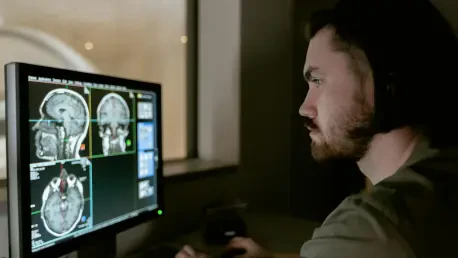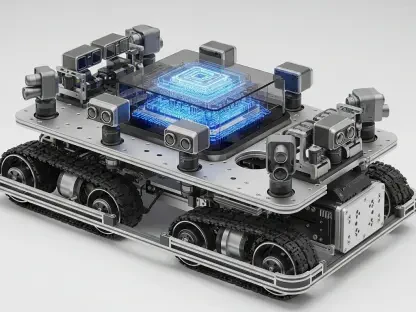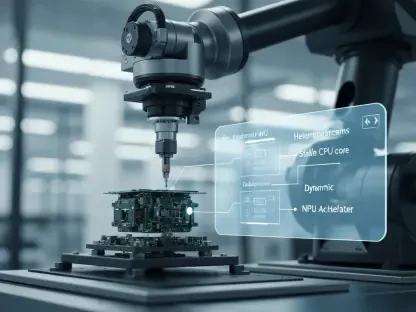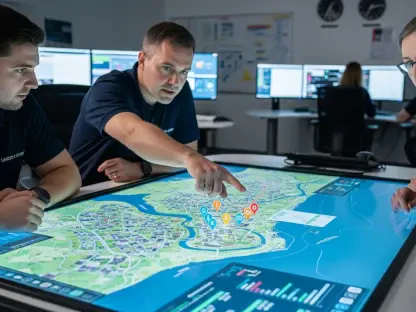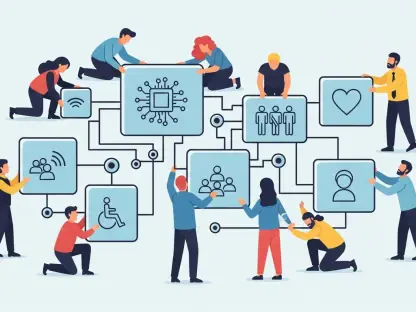What if a rural clinic with minimal resources could diagnose deadly conditions like skin cancer as accurately as a world-class hospital, using just a handful of images? This scenario, once unimaginable, is now within reach thanks to a groundbreaking artificial intelligence tool developed by researchers at the University of California San Diego (UCSD). This innovation slashes the need for vast datasets in medical imaging, opening doors to faster, cheaper, and more accessible diagnostics across diverse healthcare settings. The potential to transform lives, especially in underserved areas, is staggering, as this technology tackles one of the most persistent barriers in modern medicine.
Why Data Scarcity Threatens Modern Diagnostics
The backbone of medical imaging lies in segmentation—a process where every pixel in scans like X-rays or ultrasounds is labeled to pinpoint critical features such as tumors or healthy tissue. Traditional deep learning models, which power these diagnostics, demand thousands of expertly annotated images to function effectively. However, compiling such datasets is a costly, labor-intensive task, often out of reach for facilities dealing with rare diseases or limited budgets, creating a dangerous gap in care delivery.
This data dilemma disproportionately impacts smaller clinics and regions with fewer specialists. Without access to large, annotated datasets, accurate diagnoses become delayed or unattainable, risking patient outcomes. The urgency to address this issue has never been clearer, as millions worldwide await solutions that can bridge the divide between resource-rich and resource-poor healthcare environments.
Unveiling GenSeg: A Game-Changer in AI Efficiency
Enter GenSeg, the UCSD team’s pioneering AI tool that redefines what’s possible in medical imaging by achieving high accuracy with drastically fewer images—sometimes as few as 40 instead of thousands. Its innovative two-stage design first creates synthetic images from segmentation masks to bolster limited real-world data. Then, it trains a segmentation model using both real and synthetic images, employing a feedback loop to continuously improve the synthetic data’s relevance and quality.
Tested across a range of applications, from detecting skin lesions to mapping liver structures in 3D scans, GenSeg has demonstrated a remarkable 10 to 20% performance edge over conventional methods in ultra-low-data scenarios. This leap in efficiency means that even the smallest clinics can harness cutting-edge diagnostic power without the burden of extensive data collection, marking a significant shift in how technology can level the playing field.
Voices from the Field: Insights on Impact
Lead researcher Li Zhang highlights the tool’s transformative promise, noting, “By merging data generation with model training, the synthetic images are fine-tuned to enhance accuracy exactly where it’s needed.” This perspective, shared in a recent peer-reviewed study, reflects a growing agreement among AI experts that tools like GenSeg can reshape healthcare delivery. The ability to work with minimal data is not just a technical triumph but a practical lifeline for overstretched medical professionals.
Consider a dermatologist in a remote practice who annotated just 40 dermoscopy images. With GenSeg, suspicious lesions were identified in real-time, slashing diagnosis timelines from weeks to mere hours. Such outcomes illustrate the tool’s capacity to save time, reduce costs, and, most importantly, improve patient care in settings where every minute counts, offering a glimpse into a future where technology empowers every corner of medicine.
Real-World Applications: From Skin to Scans
The versatility of GenSeg stands out as one of its strongest assets, with successful applications spanning multiple medical fields. In breast cancer detection, the tool analyzes ultrasound images to identify malignant tissue with unprecedented precision, even when data is scarce. Similarly, it excels in colonoscopy imaging by spotting polyps that might otherwise go unnoticed, providing critical early warnings for patients at risk.
Beyond these, GenSeg adapts to complex 3D imaging tasks, such as detailing the hippocampus for neurological studies or outlining liver anatomy for surgical planning. This adaptability ensures that healthcare providers across specialties can rely on a single, powerful tool to address diverse diagnostic challenges, breaking down barriers that once limited advanced care to well-funded institutions.
Bringing GenSeg to Clinics: Steps for Adoption
For healthcare facilities eager to integrate this technology, a clear roadmap exists. The first step involves pinpointing imaging tasks hindered by data scarcity, such as diagnosing rare conditions or conducting specialized scans. Partnering with AI experts to deploy GenSeg, providers can start with a small set of annotated images—often fewer than 50—to kickstart the training process, leveraging the tool’s ability to generate supplementary data.
Next, utilizing the built-in feedback mechanism allows for ongoing refinement, ensuring synthetic images align with real-world clinical needs. Training staff to interpret GenSeg’s outputs alongside traditional methods further enhances reliability, blending human expertise with AI efficiency. This approach not only cuts operational costs but also expands diagnostic reach, empowering even the most resource-constrained settings to deliver top-tier care.
Reflecting on a Milestone in Medical Innovation
Looking back, the development of GenSeg marked a turning point in how technology addressed the inequities of medical diagnostics. Its ability to perform with minimal data reshaped the landscape, ensuring that life-saving tools were no longer confined to elite institutions. The stories of rural clinics detecting cancers and urban hospitals streamlining complex scans became powerful testaments to its impact.
As the journey continued, the focus shifted to broader collaboration between AI developers and clinicians to refine such tools further. Expanding access through scalable training programs and integrating real-time feedback from diverse medical settings emerged as vital next steps. This ongoing effort promised to sustain the momentum, ensuring that innovations like GenSeg would keep pushing boundaries, making healthcare a universal right rather than a privilege.
